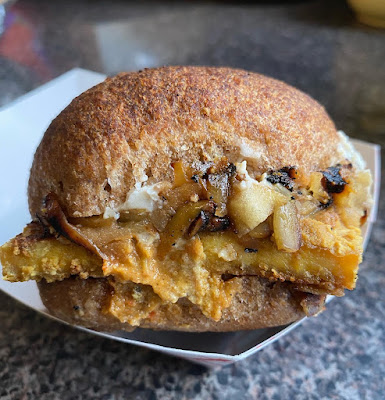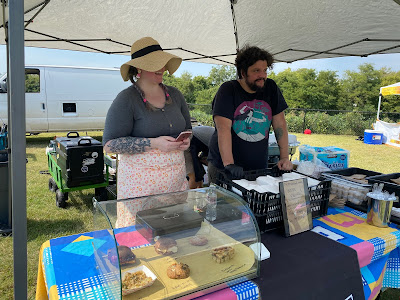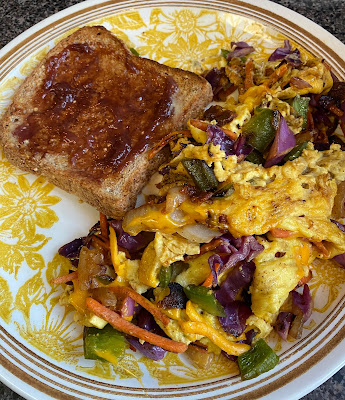I LOVE INDIAN FOOD. Possibly more than any other culture's cuisine. But I've never been able to make authentic Indian food at home because most recipe books written for an American audience avoid harder-to-find traditional ingredients, like various dals, hing, curry leaves, black mustard seed, etc. And the best Indian restaurants in Memphis are all a good 30-minute or more drive from my house. So I just rarely eat Indian food.
But that's changed with Plant-Based India by Dr. Sheil Shukla. This totally vegan Indian cookbook is written by a doctor who doesn't shy away from traditional ingredients. We have three Indian markets in the Memphis area, so authentic ingredients aren't hard to find here. And really, in this age, you can buy anything online. His recipes are a blend of Gujarati dishes (where his family hails from) and a few modernized recipes that call for less-traditional ingredients, like quinoa. And the photos are GORGEOUS. This hardcover book could double as a coffee table book!
I went to Janta Farmers Market in Southaven and stocked up on ingredients that were called for in multiple recipes and dove right in. I told the clerk, an older Indian gentleman, at the store that I was going to start experimenting with Indian cuisine, and he said "You'll never learn until you dive in." So right! So I dove! Here's what I've made so far.
I started with the Rice Vermicelli and Corn Upma, which is something you'd eat as both a snack or breakfast. I ended up eating it for breakfast for several days. This may have been my very favorite recipe. It has tender vermicelli (a special short version I found at the Indian market) with curry leaves, hing, lots of turmeric, corn, and roasted cashews. Still dreaming about this.
I also LOVED this Roasted Aloo Chat. I'm all about Indian snack foods, but the North Indian restaurants near me don't serve things like this. You've got to drive out to Hacks Cross in Memphis for South Indian, where the chat is more likely to be found. This has roasted potatoes tossed with chat masala (it has black salt and lots of other spices) topped with cilantro-mint chutney, date chutney (recipes for both are in the book), unsweetened yogurt, finely diced onion, carrot, and bell pepper, and sev (the crunchy sticks on top! I love sev!).
Here's one of Dr. Shukla's less traditional recipes. This is Quinoa Kachumber (kachumber is a salad) with cucumber, tomato, bell pepper, and onion, served with roasted papad. I bought the papad at the Indian market. I love crunchy, salty papad, which is why I wanted to make this salad.
There's a whole chapter devoted to dal, like this Tadka Dal made with masoor dal with an added spicy oil. It was excellent with some storebought whole wheat parantha. There is a parantha recipe in the book, but it calls for atta flour, and the Indian market only sold this in giant bags. I figured I'd save money and be lazy with a frozen version.
I also tried this Gujati Dal, made with toor dal and peanuts! The peanuts add such a fun texture and flavor. I served it over basmati rice with more parantha. The author includes Instant Pot instructions for the dal recipes, which is very nice!
And finally, here's a yummy dinner of Flavar Vatana Nu Shak with Lemon Rice. The flavar dish is cauliflower and peas with lots of turmeric and spices, and the rice was white basmati flavored with lemon, curry leaves, and peanuts (which sounds weird in lemon rice, but it was awesome!). Also, many (probably most) of these recipes call for hing (or asafoetida), which is probably my favorite Indian food ingredient. It's a pungent spice made from tree sap that just makes everything better!
I have so many more recipes dog-earred in this book! There's an Indo-Chinese Chili Cauliflower Tofu that I can't wait to try and a fermented bread called Handvo. Plus, I'm definitely making the Masala Chai from the drinks chapter soon and the Cardamom Coffee Cake from the desserts section!












































